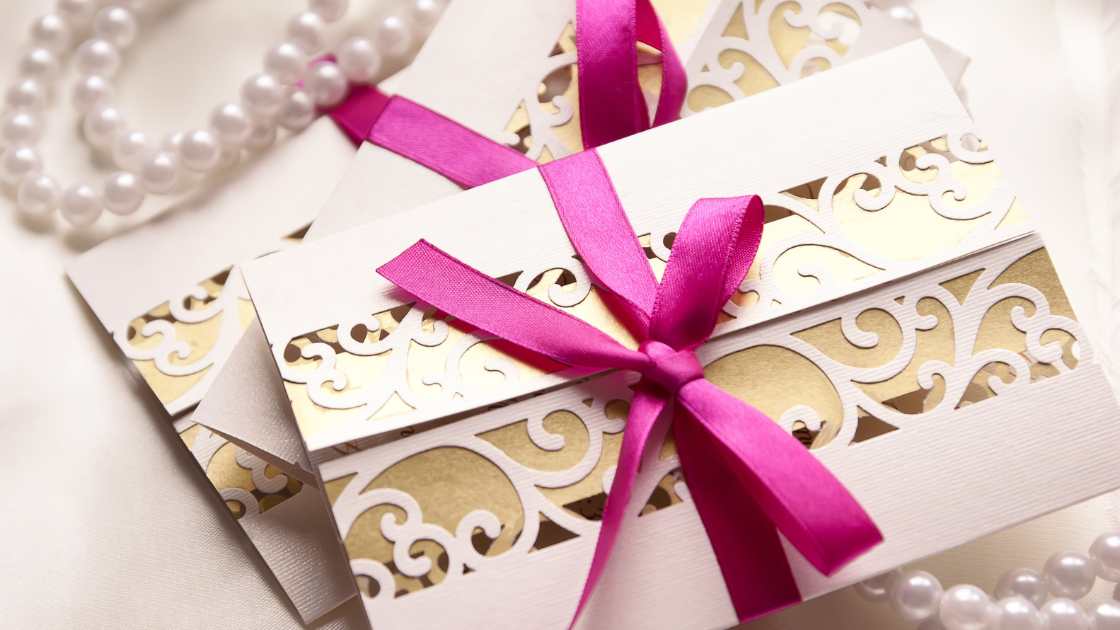How to Address Wedding Invitations: A Guide to Making Each Guest Feel Special

When it comes to wedding preparations, addressing invitations might seem like a simple task, but it’s one that holds significant importance. The way you address your wedding invitations sets the tone for your big day and reflects the level of care and consideration you have for your guests. Whether you’re going for a formal affair or a more casual celebration, follow our guide on how to address wedding invitations to ensure that each guest feels truly special.
There are 7 Effective Ways to Addressing Wedding Invitations
Start with the Basics: The Outer Envelope
The outer envelope serves as the first impression of your wedding invitation. It’s essential to get the addressing right, as it helps ensure that your invitation arrives at the intended recipient’s doorstep in pristine condition. Use the full names and proper titles of your guests. If the invitation is for a married couple, use “Mr. and Mrs.,” followed by the husband’s full name. For an unmarried couple living together, list their names alphabetically. When inviting a family, use “The [Last Name] Family.”
Dive into Details: The Inner Envelope
The inner envelope is a more personal touch that provides an opportunity to be more informal and specific. Use only the first names or nicknames of close family and friends, such as “Aunt Jane” or “Grandpa Tom.” This adds an extra layer of warmth and familiarity to the invitation, indicating their special place in your life.
Children and Plus-Ones: Navigating the Guest List
When addressing wedding invitations, it’s important to clarify whether children are invited or if guests can bring a plus-one. If children are invited, list their names on the inner envelope beneath their parents’. If you’re not including children, simply address the invitation to the parents. To indicate a plus-one, write “and Guest” after the recipient’s name.
Respect Titles and Professions: Formal Addressing
For guests with distinguished titles or professions, such as doctors or military personnel, use their appropriate titles. Address a doctor as “Dr.” and a military officer by their rank. If both partners hold titles, list them in alphabetical order.
Same-Sex Couples: Consideration and Etiquette
Addressing invitations for same-sex couples follows the same guidelines as heterosexual couples. Use the same etiquette of listing names alphabetically or using titles based on marital status. The key is to treat all couples equally and with the same level of respect.
Pay Attention to Divorced or Widowed Guests
When addressing invitations for guests who are divorced or widowed, use their current status and proper titles. For a divorced woman who retained her ex-husband’s last name, use “Mrs.” followed by her first name and his last name. A widowed woman can be addressed as “Mrs.” followed by her late husband’s full name.
Triple-Check Before Mailing
Before sending out your beautifully addressed wedding invitations, take the time to triple-check the names, titles, and addresses. Ensuring accuracy shows that you’ve put thought and effort into each invitation, making your guests feel valued and respected.
FAQs
How should I address wedding invitations for a married couple with different last names?
When addressing wedding invitations for a married couple with different last names, it’s essential to use both of their full names to ensure clarity. Write “Mr. [Husband’s First Name] [Husband’s Last Name] and Mrs. [Wife’s First Name] [Wife’s Last Name]” on the outer envelope. If you’re using an inner envelope, you can use their first names along with any appropriate titles, such as “John and Mary.” This approach respects both partners and their individual identities while maintaining traditional etiquette.
What’s the proper way to address wedding invitations for same-sex couples?
Addressing wedding invitations for same-sex couples follows the same guidelines as heterosexual couples. Use the names and titles that reflect their relationship and marital status. If both partners have the same last name, you can list their names alphabetically, e.g., “Mr. Alex Johnson and Mr. Michael Smith.” If they have different last names, follow the format that includes both their full names, such as “Ms. Jamie Rodriguez and Mrs. Emily Thompson.” The key is to treat all couples with respect and equality.
How do I indicate that children are invited or include plus-ones on the wedding invitations?
When indicating that children are invited, you can either list their names on the inner envelope beneath their parents’ names or include a line on the main invitation indicating that children are welcome. If you’re allowing plus-ones, make sure to write “and Guest” after the recipient’s name on the outer envelope. This lets the guest know that they’re welcome to bring a companion. Remember, clear communication is crucial to avoid any confusion and help your guests understand the details of your invitation.
Conclusion
Addressing wedding invitations is more than just a mundane task; it’s an opportunity to show your guests that you’ve considered them individually and want them to be part of your special day. Whether you’re aiming for a formal tone or a more relaxed atmosphere, following proper etiquette while personalising the details will leave a lasting impression on your guests. By putting care into your invitations, you set the stage for a truly memorable wedding celebration.





